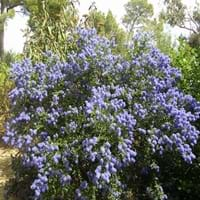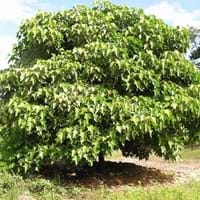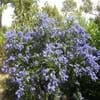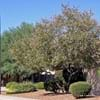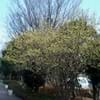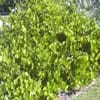Life Span
Perennial
Perennial
Origin
Hybrid origin
Southeastern Asia, Melanesia, Micronesia, Polynesia
Types
Not Available
Not Available
Habitat
Coastal Mountains, Coastal Regions, Hillside, Open Forest, Rocky areas
Woodlands
USDA Hardiness Zone
5-8
10-12
Sunset Zone
5, 6, 7, 8, 9, 14, 15, 16, 17, 18, 19, 20, 21, 22, 23, 24
H2, 23, 24
Habit
Cushion/Mound-forming
Oval or Rounded
Flower Color
Pink, Light Pink
White
Flower Color Modifier
Not Available
Bicolor
Fruit Color
Hot Pink
Light Green, Gray Green
Leaf Color in Spring
Dark Green
Green, Gray Green, Gray
Leaf Color in Summer
Dark Green
Green, Gray Green, Gray
Leaf Color in Fall
Dark Green
Green, Gray Green
Leaf Color in Winter
Not Available
Green
Leaf Shape
Oval
Maple shaped
Plant Season
Summer
Spring, Summer, Fall, Winter
Sunlight
Full Sun, Partial Sun, Partial shade
Full Sun, Partial Sun
Growth Rate
Fast
Very Fast
Type of Soil
Loam
Loam, Sand
The pH of Soil
Acidic, Neutral, Alkaline
Acidic, Neutral, Alkaline
Soil Drainage
Well drained
Well drained
Bloom Time
Late Spring, Early Summer, Early Fall
Indeterminate
Tolerances
Drought
Wet Site, Drought, Salt
Where to Plant?
Ground, Pot
Ground
How to Plant?
Seedlings, Stem Planting
Seedlings, Stem Planting
Plant Maintenance
Medium
Medium
Watering Requirements
Average Water Needs, Do Not over Water, Never Over-water, Water Deeply
Water daily during growing season
In Summer
Lots of watering
Moderate
In Spring
Moderate
Less Watering
In Winter
Average Water
Less Watering
Soil pH
Acidic, Neutral, Alkaline
Acidic, Neutral, Alkaline
Soil Type
Loam
Loam, Sand
Soil Drainage Capacity
Well drained
Well drained
Sun Exposure
Full Sun, Partial Sun, Partial shade
Full Sun, Partial Sun
Pruning
Remove damaged leaves, Remove dead branches, Remove dead leaves
Remove damaged leaves, Remove dead branches, Remove dead leaves
Fertilizers
All-Purpose Liquid Fertilizer
All-Purpose Liquid Fertilizer
Pests and Diseases
Red blotch
Aphids, Insects
Plant Tolerance
Drought
Drought
Flower Petal Number
Single
Single
Foliage Texture
Medium
Medium
Foliage Sheen
Glossy
Matte
Attracts
Butterflies
Birds, Butterflies
Allergy
Asthma, breathing problems
Nausea, Vomiting
Aesthetic Uses
Beautification, Bouquets, Landscape Designing, Showy Purposes
Cottage Garden
Beauty Benefits
Not Available
For treating wrinkles, Moisturizing, used as a dye
Edible Uses
Yes
Sometimes
Environmental Uses
Air purification, Food for animals, Prevent Soil Erosion
Air purification, Shadow Tree
Medicinal Uses
Diarrhea, Inflammation, Jaundice
Cramps, Dermatitis
Part of Plant Used
Flowers
Bark, Fruits, Leaves
Other Uses
Can be made into a herbal tea
Can be made into a herbal tea, Making Sweet Scented Oil, Sauces, Used as firewood
Used As Indoor Plant
No
No
Used As Outdoor Plant
Yes
Yes
Garden Design
Container, Feature Plant, Foundation, Mixed Border, Rock Garden, Wall, Topiary, Bonsai, Espalier
Mixed Border, Shade Trees, Street Trees, Tropical
Botanical Name
CEANOTHUS x pallidus
ALEURITES moluccanus
Common Name
Wild lilac
Candleberry, Candlenut, Kukui
In Hindi
Ceanothus
Aleurites moluccanus
In German
Ceanothus
Lichtnussbaum
In French
Ceanothus
Aleurites moluccana
In Spanish
Ceanothus
Aleurites moluccanus
In Greek
Ceanothus
Aleurites moluccanus
In Portuguese
Ceanothus
Nogueira-de-iguape
In Polish
Ceanothus
Nogueira-de-iguape
In Latin
Ceanothus
Aleurites moluccanus
Phylum
Magnoliophyta
Angiosperms
Class
Magnoliopsida
Magnoliopsida
Order
Rosales
Euphorbiales
Family
Rhamnaceae
Euphorbiaceae
Genus
Ceanothus
Aleurites
Clade
Angiosperms, Eudicots
Angiosperms, Eudicots, Rosids
Tribe
Not Available
Aleuritideae
Subfamily
Not Available
Crotonoideae
Number of Species
Not Available
Importance of Ceanothus and Kukui
Want to have the most appropriate plant for your garden? You might want to know the importance of Ceanothus and Kukui. Basically, these two plants vary in many aspects. Compare Ceanothus and Kukui as they differ in many characteristics such as their life, care, benefits, facts, etc. Every gardener must at least have the slightest clue about the plants he wants to plant in his garden. Compare their benefits, which differ in many ways like facts and uses. The medicinal use of Ceanothus is Diarrhea, Inflammation and Jaundice whereas of Kukui is Cramps and Dermatitis. Ceanothus has beauty benefits as follows: Not Available while Kukui has beauty benefits as follows: Not Available.
Compare Facts of Ceanothus vs Kukui
How to choose the best garden plant for your garden depending upon its facts? Here garden plant comparison will help you to solve this query. Compare the facts of Ceanothus vs Kukui and know which one to choose. As garden plants have benefits and other uses, allergy is also a major drawback of plants for some people. Allergic reactions of Ceanothus are Asthma and breathing problems whereas of Kukui have Nausea and Vomiting respectively. Having a fruit bearing plant in your garden can be a plus point of your garden. Ceanothus has no showy fruits and Kukui has showy fruits. Also Ceanothus is not flowering and Kukui is not flowering . You can compare Ceanothus and Kukui facts and facts of other plants too.
